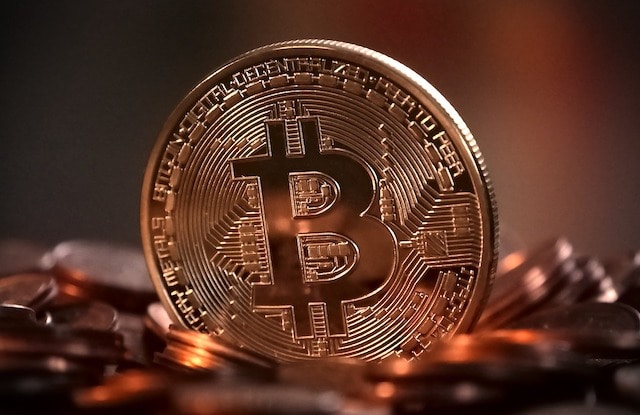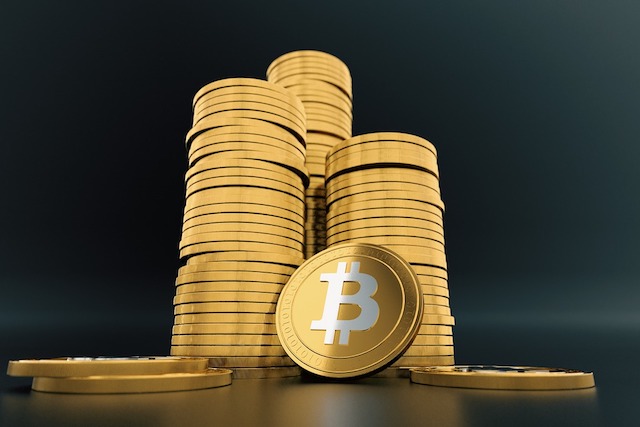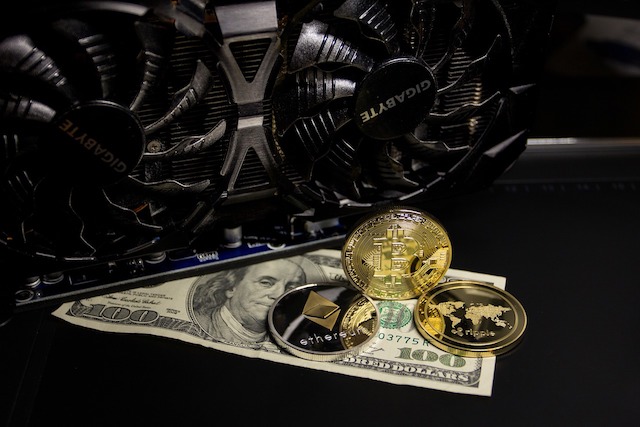10 Shocking Cryptocurrency Failures and Risks You Should Know
Cryptocurrency has become a buzzword that almost everyone has heard of by now. While it’s often the target of online jokes and skepticism, the reality is that it’s likely here to stay. Sure, plenty of people doubted it would last, but crypto has proven its resilience. What’s fascinating is how it has created both incredible success stories and jaw-dropping failures. Some early adopters struck gold, turning modest investments into life-changing sums. But let’s be real—timing and luck played a huge role. For every crypto millionaire, there’s someone who jumped in too late or bet on the wrong coin, leading to some truly spectacular crashes.
The crypto world is a rollercoaster of highs and lows, and that’s what makes it so intriguing. It’s not just about the money; it’s about the wild, unpredictable journey. From overnight millionaires to projects that flamed out in dramatic fashion, the stories are as varied as they are unbelievable. Whether you’re a skeptic or a believer, there’s no denying that cryptocurrency has added a new layer of excitement—and chaos—to the financial world. Love it or hate it, crypto is full of surprises, and that’s what keeps people talking.
10.El Salvador’s Attempt to Give Everyone a Crypto Wallet Bombed

On the internet, cryptocurrency enthusiasts are often labeled as “cryptobros.” The term “bro” sticks because, let’s face it, the majority of these enthusiasts tend to be men. Are there women in the mix? Sure, but they’re fewer and far between. What’s even more surprising is that there was once an entire country that could’ve been called a cryptobro nation—El Salvador.
In 2021, El Salvador made headlines by becoming the first country to adopt Bitcoin as legal tender. The government went all out, handing out crypto wallets to every citizen to make digital transactions seamless. At one point, more people had these wallets than traditional bank accounts. The idea was bold: to position El Salvador as a pioneer in financial technology, giving its citizens a front-row seat to what could’ve been a revolutionary economic shift. But, as it turns out, reality didn’t quite match the vision.
A year into the experiment, not much had changed. Despite the government spending a whopping $60 million, Bitcoin usage remained shockingly low. Few businesses accepted it, and even fewer citizens used it regularly. For most, life stayed the same—or got worse. The government tried to sweeten the deal by offering $30 to anyone who downloaded the official wallet, called Chivo. While many took the bait, about 61% of users abandoned the app shortly after. Those who stuck around mostly used it for traditional banking, not crypto. Even remittances, a key focus of the initiative, saw only 1.6% in Bitcoin transactions just five months after launch.
The whole experiment was a mix of ambition and irony. While El Salvador aimed to lead the world into a crypto-powered future, its citizens seemed more interested in the $30 incentive than the cryptocurrency itself. It’s a fascinating case of how grand ideas can collide with everyday realities, leaving us with a story that’s equal parts intriguing and cautionary. Whether you’re a crypto fan or a skeptic, this tale of a nation’s crypto gamble is hard to ignore.
9.The Average Cryptocurrency Only Lasts for 15 Months

Back in the day, Bitcoin was the only cryptocurrency anyone talked about. If you were savvy enough to grab some when it was dirt cheap, you’d probably be sitting on a fortune today. But here’s the catch: once Bitcoin hit it big, it sparked a gold rush of imitators. Some of these copycats found success, but most? Not so much.
If you spend any time online, especially in crypto circles, you’ll notice a new coin popping up almost daily. It’s enough to make you wonder if the market is heading for over-saturation. But here’s the twist—most of these coins don’t even stick around long enough to flood the market. The average lifespan of a cryptocurrency is just 15 months. To put it into perspective, in 2018, a staggering 92% of blockchain projects failed. Fast forward to 2022, and 83 crypto coins bit the dust, up from 74 the year before.
So, why is investing in crypto such a gamble? For starters, there’s the obvious risk: your investment might never gain value, or worse, it could end up worth less than what you put in. But there’s another layer to it—if you wait too long, the coin itself might vanish into thin air. Poof! Your money’s gone, and there’s nothing left to show for it.
What’s behind all these failures? Two main culprits: lack of interest and outright fraud. Some coins simply don’t catch on, while others are outright scams designed to take your money and run. It’s a wild, unpredictable world out there, and while the potential rewards can be huge, the risks are just as massive. Whether you’re a crypto enthusiast or a curious observer, one thing’s for sure—this space is never short on drama.
8.Every Year Billions in Crypto is Stolen

When crypto started gaining steam, many online articles touted how secure it was as a selling point. Go back to 2018 and before and you can find a lot of articles and forum posts about how Bitcoin is almost impossible to steal or, at least, how you can make it impossible to steal thanks to blockchain technology.
These days that point is emphasized less. New cryptocurrencies and old alike still mention all the security features, but so do bank vaults and bike locks. The fact that people can and have circumvented those security measures has put a different spin on the boastfulness, however.
In 2023, about $1.7 billion worth of crypto was stolen. That was actually progress, though. In 2022 the losses were about $3.7 billion and $3.3 billion in 2021.
Fifteen days into 2024 and $17 million in crypto had already been stolen. Millions more were stolen the next week in Canada. Another $20 million was yoinked in May. All told, the first quarter of 2024 saw $348 million stolen.
7.Crypto Exchanges Keep Failing

If you’re into cryptocurrency, you’ve probably used a crypto exchange. These platforms let you do exactly what their name suggests: exchange, buy, and sell digital currencies. Want to cash out your Bitcoin fortune into good old US dollars? Or maybe throw your savings into a meme-inspired coin? The choice is yours. But here’s the thing—crypto exchanges aren’t always as reliable as they seem.
Just like the volatile currencies they trade, exchanges have a reputation for running into trouble. Poor management, shady practices, or outright fraud have led to some spectacular collapses, leaving users high and dry. And it’s not a rare occurrence. Every year, more exchanges go under, taking people’s money with them.
Take 2022, for example. FTX, one of the biggest names in the game, filed for bankruptcy with a jaw-dropping $9 billion deficit. Customers lost $8 billion, while investors saw $1.7 billion vanish into thin air. That same year, Three Arrows Capital crumbled with $3.5 billion in losses. And those were just the headliners—nine other major exchanges went bust that year alone.
Here’s a staggering stat: since 2014, 42% of crypto exchanges have simply disappeared, often without explanation. Imagine if nearly half the banks you trusted just vanished over the past decade, leaving you with no way to recover your money. It’s a chilling thought, but it’s the reality of the crypto world.
While the promise of quick profits and financial freedom draws many to crypto, the risks are just as real. Exchanges can fail, fortunes can disappear overnight, and there’s often little recourse for those left holding the bag. Whether you’re a seasoned trader or a curious newcomer, it’s a reminder to tread carefully in this wild, unpredictable space. After all, in the world of crypto, not everything that glitters is gold.
6.Reports Suggest 80% of ICOs Were Scams

If you’re not down with crypto lingo, you may not be familiar with the initials ICO. ICO or Initial Coin Offering is basically a round of funding before a new cryptocurrency launches. Usually, these are crowdfunded but not always.
In an ICO, the makers of this new crypto will offer coins to investors for cash to seed the launch of the whole operation. As an investor, you now have these coins which, theoretically, will be of value when the coin hits the market. Basically, everyone involved hopes this new crypto will be the next Bitcoin so they invest when it’s worth pennies and hope it explodes into thousands of dollars.
While every investment is a potential risk, ICOs are especially risky since research from 2017 shows that 80% of them are scams. Of the remaining 20%, only 8% actually reach an exchange and even have the possibility of giving you a return on investment. You literally have almost six times better odds of winning at Blackjack and only slightly worse odds of winning on a Vegas slot machine.
5.Millions of Dollars in Crypto Has Been Lost Thanks to Forgotten Passwords

When it comes to cryptocurrency, security is a big deal—and for good reason. There are plenty of safeguards in place to keep your digital money safe, but one of the most critical is your password or private key. Think of it as the golden ticket to your crypto wallet. Lose it, and you’re in trouble. Big trouble.
Unlike your email account, where you can usually reset a forgotten password by answering a few security questions, crypto wallets don’t offer that kind of safety net. Forget your password? Tough luck. There’s no customer service hotline, no “Forgot Password” button, and no way to recover your funds. It’s just gone.
Take Ironkey, for example. This device encrypts your keys and gives you exactly 10 chances to guess your password. Get it wrong, and poof—your data is locked away forever. In 2019, it was estimated that around 20% of all Bitcoin, worth a staggering $140 billion, was lost or unrecoverable. Why? People forgot their passwords, lost their keys, or accidentally wiped their devices.
Then there’s the story of Stefan Thomas, a man who made headlines in 2021. He had just two guesses left to unlock his Ironkey, which held the keys to $220 million in Bitcoin. By 2023, a group of hackers claimed they could crack the encryption and help him recover his fortune. But Thomas turned them down, leaving his millions locked away indefinitely.
It’s a wild reminder of how unforgiving the crypto world can be. On one hand, the security is airtight—no one can access your funds without your key. On the other, that same security can backfire spectacularly if you’re not careful. Whether you’re a crypto newbie or a seasoned pro, it’s a cautionary tale: in the world of digital currency, your memory might just be your most valuable asset.
4.Mining Bitcoin May Cost More Than it’s Worth

Back when cryptocurrency was just starting to really take off, one of the big draws for a lot of people was the fact that you could “make” it yourself. Bitcoin mining requires a fairly impressive computer set up these days, usually giant warehouses full of computers, but there was a time when someone with a decent computer could have just done it themselves in their home.
The problem now is that if you were to try to mine Bitcoin on your own on a small scale, it would probably cost you more money than you would make doing it in terms of technology and electricity to pull it off. In fact, as of Spring 2024, it’s generally considered impossible for anyone with a small home set up to have a computer powerful enough to make it worthwhile to try.
3.Unpredictable Transaction Fees

One thing people hate about traditional banking is the fees. Banks will charge fees for pretty much everything. In 2023, US banks raked in $5.83 billion in NSF and overdraft fees. Crypto isn’t always a better option for avoiding those fees, however.
Bitcoin transaction fees can be volatile. One day they can be pennies and the next day they can be $40. In April 2024 they surged to $128. In a single day that led to over $78 million in fees.
Ethereum fees have gone as high as $70. The more transactions being done on the blockchain at a time, the more congested the network becomes and the higher the fees. In 2022, thanks to Bored Ape Yacht Club monopolizing the network one day, fees went through the roof. One user claimed he was trying to make a $5 transaction but was going to be charged $4500 in fees if he went through with it.
2.Few Business Accept Crypto as Payment

For those of us who aren’t knee-deep in the crypto world, understanding how cryptocurrency works can feel like trying to solve a puzzle with missing pieces. Why is it worth anything at all? Is it just because people say it is? Well, yes—and that’s not as crazy as it sounds. Think about it: people pay for all sorts of things that might seem pointless to others. Collectible sneakers, rare trading cards, even digital art. Value often comes down to one thing: demand. If people want it, it’s worth something.
But here’s the catch—while crypto has its fans, it’s still not widely accepted as a form of payment. Sure, some big names have jumped on the bandwagon. Around 15,000 businesses worldwide now accept Bitcoin, which sounds impressive until you realize there are roughly 334 million companies globally. So, in the grand scheme of things, crypto is still a niche player.
Then there’s the rollercoaster of public perception. In 2021, Elon Musk made headlines when Tesla announced it would stop accepting Bitcoin, dealing a blow to its credibility as a legitimate currency. And while some countries are warming up to crypto, major players like the US and Canada still don’t recognize it as legal tender.
So, what does this all mean? Cryptocurrency exists in a strange space—it’s valuable because people believe in it, but its real-world utility is still limited. It’s a fascinating experiment in how we assign value to things, and whether you’re a skeptic or a believer, one thing’s for sure: the crypto story is far from over. Whether it’s the future of money or a speculative bubble, it’s definitely keeping us all on our toes.
1.Scams Are Rampant, Ever Changing, and Very Lucrative

We’ve talked about how cryptocurrency is a magnet for scams before, but the truth is, the problem isn’t going away. In fact, it’s growing. By the time you hear about one scam in the news, there’s a good chance another one is already brewing under the radar. It’s a never-ending game of cat and mouse, and the scammers are always one step ahead.
Here’s the thing: most of us like to think we’re too smart to fall for scams. Crypto enthusiasts, who tend to be tech-savvy, might even feel more confident in their ability to spot a fraud. But that’s exactly what scammers bank on—literally. They rely on that overconfidence to pull off their schemes. And the numbers don’t lie: billions of dollars have been lost to crypto scams, proving that no one is immune.
In 2024, the scams are as varied as they are relentless. Take “pig butchering” scams, for example. These long cons involve building trust over time, only to trick victims into investing in fake crypto projects. Over the years, this one tactic alone has drained $75 billion from unsuspecting people. Then there are the classics, like phishing scams and Ponzi schemes, which never seem to go out of style. And let’s not forget “rug pulls,” where a fake project attracts investment, only for the creators to disappear with the money.
The scale of the problem is staggering. In 2023, crypto scams cost Americans nearly $4 billion, and the majority of all investment scams today are tied to cryptocurrency. It’s a stark reminder that while crypto offers exciting opportunities, it also comes with significant risks. Whether you’re a seasoned investor or just curious about the space, staying informed and skeptical is your best defense. After all, in the world of crypto, if something seems too good to be true, it probably is.
























